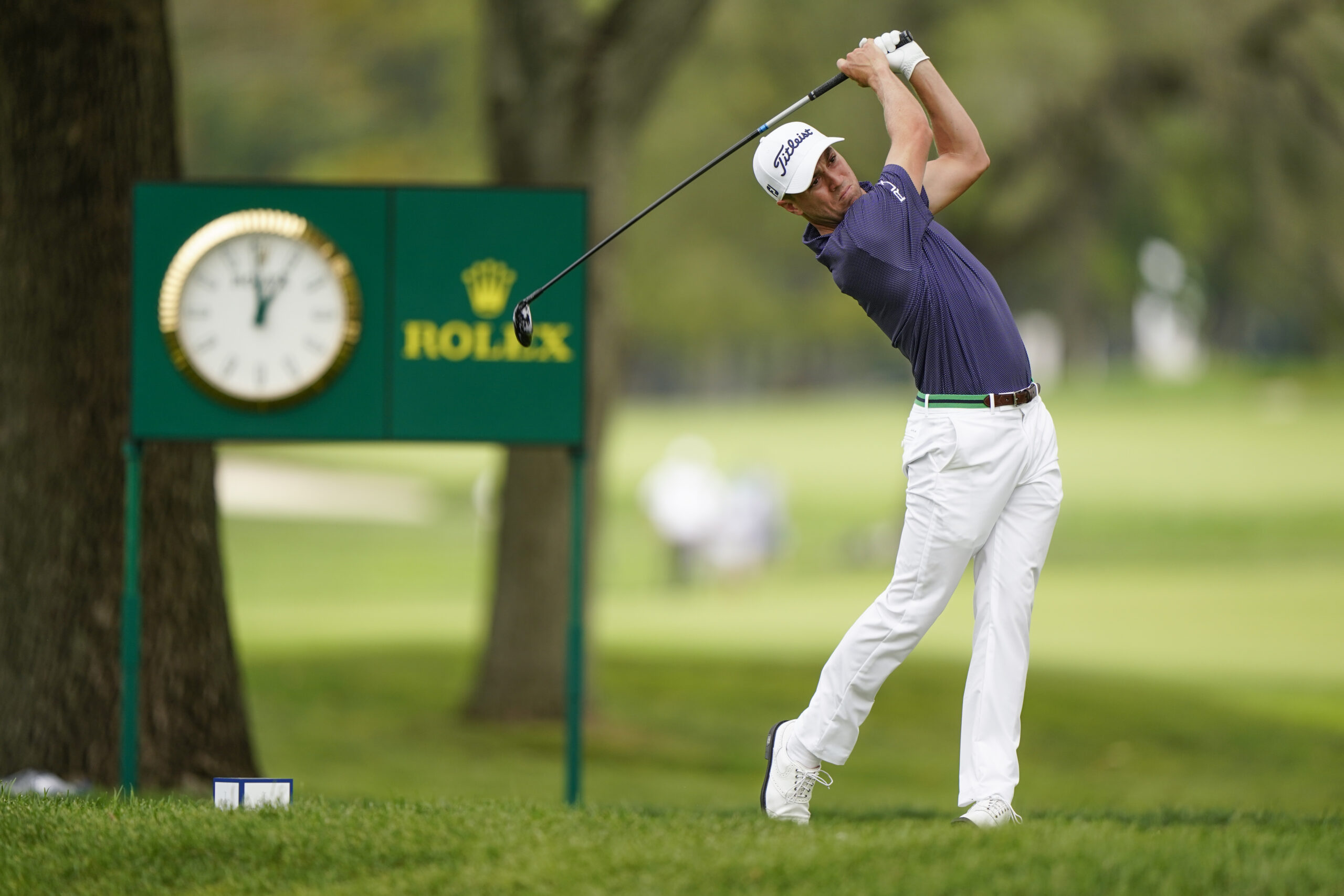So much for the course eating the world’s top players lunch during the U.S. Open at Winged Foot.
The history of Winged Foot playing above par led to the belief players would struggle to get into negative numbers. Thursday that was hardly the case as when play was suspended, 21 players were in red numbers, led by a 5-under round of 65 from Justin Thomas.
Patrick Reed, Thomas Pieters, and Matthew Wolff finished one shot back. Rory McIlroy, who has had a history of tough first rounds in majors recently, fired a 3-under 67, leaving him just two shots back.
Tiger Woods was playing a solid round of even par, but closed bogey, double bogey to finish at a 3-over, 73 and a tie for 71st.
Dustin Johnson, the world No. 1 and favorite to win the Open, also opened with a 73.
Just three players had yet to finish their round when darkness brought an end to play.
Thomas was among the handful of players given a good chance to win the Open and he showed why Thursday.
“Yeah, it was a really, really solid round of golf, said Thomas. “It’s one of the best rounds I’ve played in a while tee to green. There are a couple things here and there that definitely could have been better, but I made sure all of my misses were in the right spot, and that’s what you have to do at a U.S. Open.”
He wasted no time Thursday, dialing in his iron game to bridie the first hole, on the way to a 2-under on the front, capped off by a birdie at No. 9. Birdies at 10 and 11, took him to 4-under, then on 18 he made a long putt to finish with the 65, the lowest opening round ever for an opening round in an Open at Winged Foot.
The three straight birdies were a huge surge.
“I had a good drive on 9. Had a 5-iron in, looking to make birdie there. It was a difficult pin. After where I went, it was an easy up and down, like a little bump and run 8 iron to about five feet,” explained Thomas. “No. 10 was one of my better irons of the day…landed right next to it about ten feet or so and made a nice curl-in putt there. Played the next hole ideally how I’d like, just a 4-iron off the tee and gap wedge into the hole, and a putt that’s almost so easy it’s hard.”
Reed had one of two aces on the day when he one-hopped his tee shot on the par 3, 165-yard No. 7.
“I had 166 yards, and from there I was thinking, just kind of a stock 9-iron and Kes (his caddy) thought I needed to take a hair off of it,” explained Reed. “From there I knew that if I hit it a little too hard, it’s going to kind of bounce and use that backstop, going to be able to come down. And the biggest thing was, make sure it enters from the right because it could kick left. I hit a perfect 90 percenter, and I think it one- or two-hopped in. One-hopped, all right.”
Reed knew maintaining his emotions after the ace was imperative to success on the course. After figuring out the ball went in the hole, he merely tipped his cap.
“Of course, I was excited about it, but I knew from that point that, hey, you need to settle out, get ready for the next hole,” said Reed. “Around here at Winged Foot, every golf shot you have to take full — basically pay attention to because you hit one poor golf shot, a lot of things can happen out here.”
McIlroy’s start puts him in a dangerous role, just two shots out.
“I think at a U.S. Open, if you can get off to a good start, you’re not chasing as much,” said McIlroy. “And when you chase on U.S. Open golf courses, that’s when you can start to make mistakes and compound your errors.”
Woods seemed to be playing well until his last two-hole crash. The solid play up until No. 17 provided some positives for Woods.
“Well, we have a long way to go,” said Woods. “This is a long marathon of a tournament. There’s a lot of different things that can go on. I just wish I would have finished off my round better.”
Johnson came into this week as the hottest player in the world, but it was the little things that caused problems.
“Yeah, it wasn’t too bad. Just didn’t drive it in the fairway enough,” said Johnson. “But I mean, honestly, I felt like I rolled it really well, but I just didn’t make any putts. And I think that was the difference of shooting a couple under, and I shot a few over.”
By Dennis Miller

